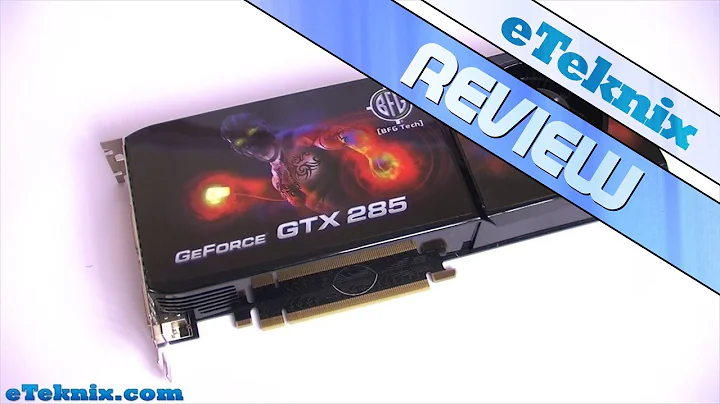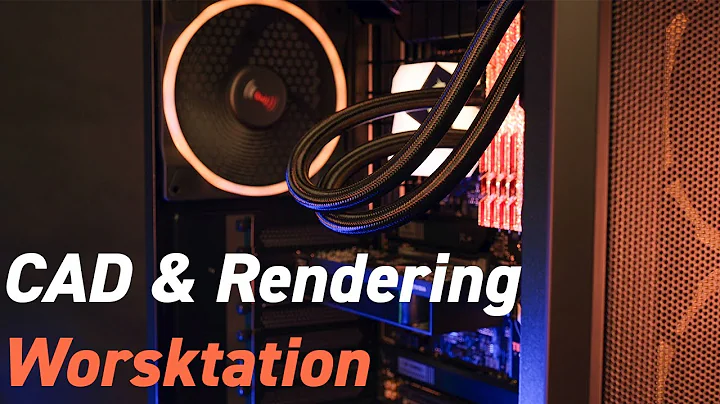Unlocking the Potential of PCIe 4.0: Is It Worth It for Gamers?
Table of Contents
- Introduction
- What is PCIe?
- The Evolution of PCIe
- PCIe Lanes and Bandwidth
- The Difference Between PCIe 3.0 and PCIe 4.0
- Performance Comparison: PCIe 3.0 vs PCIe 4.0
- Is PCIe 4.0 Worth It for Gamers?
- The Impact of PCIe 4.0 on Storage
- Considerations for Workstations
- Conclusion
Introduction
In the rapidly evolving world of technology, it is not uncommon to see older technologies being replaced by newer ones. However, it's essential to consider whether these new technologies truly offer improved features and better performance. One such technology that has caught our attention is PCI Express 4.0 (PCIe 4.0). In this article, we will explore what PCIe is, its evolution, the difference between PCIe 3.0 and PCIe 4.0, and whether gamers should invest in PCIe 4.0 motherboards.
# What is PCIe?
PCIe stands for Peripheral Component Interconnect Express. It is an expansion bus widely used by various devices such as graphics cards, SSDs, Wi-Fi adapters, modems, sound cards, and more to connect to the motherboard. First introduced in 2003 as PCIe 1.0, several newer versions have since been released, with PCIe 4.0 being the latest iteration available on the market.
# The Evolution of PCIe
Over the years, each version of PCIe has offered higher transfer rates and overall bandwidth compared to its predecessor. PCIe 4.0, with its increased speed, delivers double the transfer rate and bandwidth compared to PCIe 3.0. While PCIe 5.0 is on the horizon, PCIe 4.0 remains the latest version to hit the market. At Present, only AMD offers PCIe 4.0 compatible chipsets.
# PCIe Lanes and Bandwidth
PCIe slots can be described based on the number of lanes they feature. Common variants include PCIe x1, PCIe x4, PCIe x8, and PCIe x16, with corresponding lane counts of 1, 4, 8, and 16. Higher lane counts offer faster data transfer rates and greater bandwidth. The number of lanes required varies depending on the expansion card, such as graphics cards needing slots with 16 lanes, while sound cards often require only one.
# The Difference Between PCIe 3.0 and PCIe 4.0
The primary difference between PCIe 3.0 and PCIe 4.0 lies in their speed, transfer rates, and bandwidth. PCIe 3.0 supports up to 8 gigabytes per Second transfer rate and an overall bandwidth of 32 gigabytes per second. In contrast, PCIe 4.0 doubles the transfer rate to 16 gigabytes per second and boosts the bandwidth to 64 gigabytes per second. Other than increased speeds, there are no exclusive new features in PCIe 4.0.
# Performance Comparison: PCIe 3.0 vs PCIe 4.0
When it comes to in-Game performance, PCIe 4.0 does not offer a significant boost. The difference in frame rates between using a graphics card with a PCIe 3.0 enabled motherboard and a PCIe 4.0 enabled motherboard is marginal, typically ranging from one to two frames per second, if any. It is clear that modern graphics cards do not leverage the additional bandwidth provided by PCIe 4.0.
# Is PCIe 4.0 Worth It for Gamers?
For gamers, especially those looking to optimize costs, opting for PCIe 4.0 motherboards may not be worth it. The extra speed offered by PCIe 4.0 does not result in any noticeable in-game benefits. Furthermore, since PCIe technologies are backward and forward compatible, choosing a PCIe 3.0 motherboard does not limit future expandability. Unless you intend to build a high-performance workstation, PCIe 4.0 is not essential for gamers.
# The Impact of PCIe 4.0 on Storage
While the impact on gaming performance is negligible, PCIe 4.0 does have a more significant impact on storage devices, particularly high-performance NVMe SSDs. The increased bandwidth enables these SSDs to read and write larger volumes of data more efficiently. However, this performance gain is insignificant in the context of gaming and is more Relevant to workstations that handle intensive data processing tasks.
# Considerations for Workstations
For those building workstations that demand exceptional data processing capabilities, PCIe 4.0 can be a worthwhile investment. Its faster transfer rates and increased bandwidth can significantly improve workflow efficiency, especially when working with high-performance NVMe SSDs and other demanding peripherals. If you require the utmost performance and productivity, PCIe 4.0 is worth considering.
# Conclusion
In conclusion, PCIe 4.0, while offering impressive transfer rates and bandwidth, does not provide Meaningful in-game performance enhancements for gamers. The marginal difference in frame rates and load times between PCIe 3.0 and PCIe 4.0 is hardly noticeable. Considering the cost implications, gamers looking to optimize their budget should focus on other components rather than investing solely in PCIe 4.0. However, for users requiring top-tier workstation performance, PCIe 4.0 can significantly improve data processing tasks and overall productivity.
 WHY YOU SHOULD CHOOSE TOOLIFY
WHY YOU SHOULD CHOOSE TOOLIFY
































